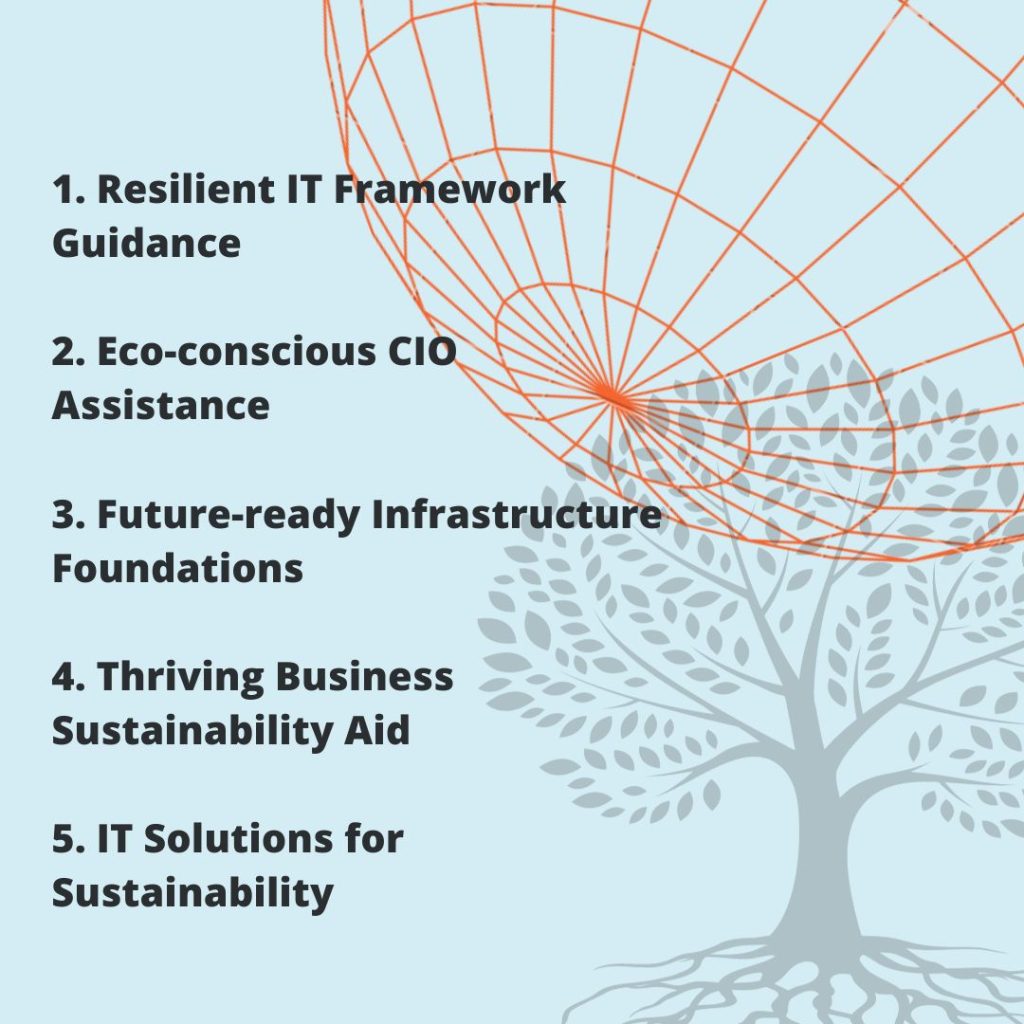In today’s rapidly evolving digital landscape, the need for sustainable and resilient IT infrastructure is paramount for businesses to thrive. As an IT solutions company, we understand the pivotal role that Chief Information Officers (CIOs) play in steering organizations towards a future-ready and eco-conscious IT framework. Hence, we present this comprehensive guide to assist CIOs in laying the foundations for sustainable IT infrastructure.

Understanding Sustainable IT Infrastructure
Sustainable IT infrastructure encompasses not only reducing environmental impact but also optimizing operations for long-term viability. It involves integrating technology in a way that minimizes waste, enhances efficiency, and supports scalability without compromising environmental stewardship.
Key Components of Sustainable IT Infrastructure
- Energy Efficiency: Implementing energy-efficient hardware, utilizing virtualization, and adopting power management strategies significantly reduce energy consumption.
- Cloud Computing and Virtualization: Embracing cloud-based services and virtualization minimizes hardware needs, leading to reduced energy usage and space requirements.
- Lifecycle Management: Proper disposal and recycling of outdated equipment prevent electronic waste and support a circular IT economy.
- Green Data Centres: Employing sustainable practices in data centres, such as using renewable energy sources and cooling systems, reduces carbon footprints.
- Remote Work Solutions: Enabling remote work options not only enhances employee flexibility but also curtails commuting-related emissions.
Steps for CIOs to Implement Sustainable IT Practices
- Assessment and Planning: Conduct an environmental impact assessment and create a strategic roadmap for integrating sustainability into the IT infrastructure.
- Technological Upgrades: Invest in eco-friendly hardware, explore cloud-based solutions, and prioritize energy-efficient technologies.
- Employee Engagement: Educate staff about the importance of sustainable IT practices and encourage their active participation in green initiatives.
- Partnerships and Collaboration: Collaborate with vendors and service providers committed to sustainability to create a collective impact.
- Continuous Improvement: Regularly evaluate and refine sustainability initiatives to adapt to evolving technologies and best practices.
Why Sustainable IT Matters for Businesses
- Cost Efficiency: Sustainable practices often lead to cost savings through reduced energy bills and optimized resource utilization.
- Enhanced Reputation: Embracing sustainability aligns with corporate social responsibility (CSR) and enhances the brand image.
- Regulatory Compliance: Adhering to environmental regulations minimizes legal risks and ensures compliance.
Our Commitment as an IT Solutions Provider
At kayimpex , we are dedicated to empowering organizations with sustainable IT solutions. Our commitment goes beyond mere technology — we prioritize delivering eco-friendly and future-proof IT strategies aligned with your business goals.
As CIOs navigate the ever-changing IT landscape, incorporating sustainable practices is no longer a choice but a necessity. Together, let’s build a resilient and environmentally conscious future through sustainable IT infrastructure.
This blog is tailored to provide guidance to CIOs looking to embed sustainability into their IT infrastructure strategies. Feel free to adapt the content to match your company’s voice and expertise while showcasing your commitment to sustainable IT solutions.
